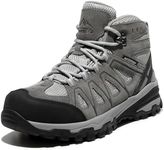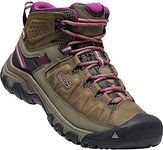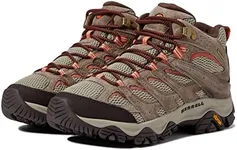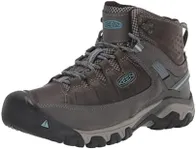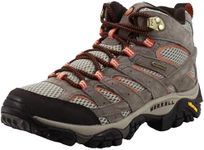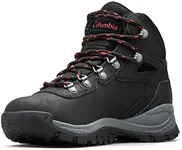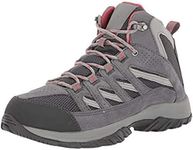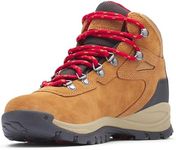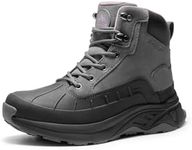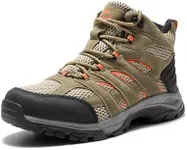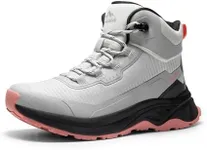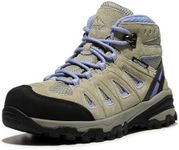Buying Guide for the Best Waterproof Walking Boots Womens
Choosing the right waterproof walking boots for women involves considering several key factors to ensure comfort, durability, and protection during your outdoor adventures. The right pair of boots can make a significant difference in your walking experience, whether you're hiking through muddy trails, crossing streams, or simply walking in wet conditions. Here are the key specifications to consider when selecting the best waterproof walking boots for your needs.WaterproofingWaterproofing is the ability of the boots to keep your feet dry in wet conditions. This is crucial for maintaining comfort and preventing blisters or other foot issues caused by moisture. Look for boots with a waterproof membrane, such as Gore-Tex, which provides reliable waterproofing while allowing your feet to breathe. If you plan to walk in very wet conditions frequently, prioritize high-quality waterproofing materials.
MaterialThe material of the boots affects their durability, weight, and breathability. Common materials include leather, synthetic fabrics, and a combination of both. Leather is durable and offers good waterproofing but can be heavier. Synthetic materials are lighter and often more breathable but may not be as durable. Choose leather for rugged, long-term use and synthetic for lighter, more breathable options.
Fit and ComfortFit and comfort are essential for preventing blisters and ensuring you can walk long distances without discomfort. Boots should fit snugly but not too tight, with enough room to wiggle your toes. Consider trying on boots with the socks you plan to wear during your walks. Look for features like padded collars, cushioned insoles, and adjustable lacing systems to enhance comfort.
Support and StabilitySupport and stability are important for preventing injuries and providing a secure footing on uneven terrain. Look for boots with good ankle support, a sturdy midsole, and a well-designed outsole with good traction. If you plan to walk on rocky or uneven trails, prioritize boots with excellent support and stability features.
WeightThe weight of the boots can affect your energy levels and comfort during long walks. Lighter boots are generally more comfortable for longer distances but may sacrifice some durability and support. Heavier boots offer more protection and support but can be tiring over long periods. Choose lighter boots for casual walks and heavier boots for more demanding hikes.
BreathabilityBreathability refers to how well the boots allow moisture and heat to escape, keeping your feet dry and comfortable. This is especially important in warmer climates or during intense physical activity. Look for boots with breathable membranes or mesh panels. If you tend to have sweaty feet or plan to walk in warm conditions, prioritize breathability.
TractionTraction is the grip the boots provide on various surfaces, which is crucial for safety and stability. The outsole pattern and material determine the level of traction. Deep, aggressive treads offer better grip on muddy or rocky terrain, while shallower treads are suitable for smoother paths. Choose boots with the appropriate level of traction for the types of surfaces you will encounter.
